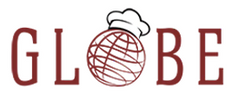How To Keep Your Aluminum Cookware Looking New
Mar 9th 2012
Cleaning instructions on keeping your cookware looking new
Like most cookware, aluminum should be allowed to cool before washing or soaking. This is a simple safeguard against warping and prevention of accidental burns in handling. All aluminum cookware should be washed after each use. Drying immediately after washing will help preserve it’s appearance.

If you are going to add salt, you this should be done after it reaches the boiling point and stir to dissolve it completely. Allowing acidic or salty foods to remain in aluminum or aluminum finished cookware for long periods of time may cause pitting. Aluminum may stain when it contacts the minerals found in water and food. Automatic dishwashing may increase the amount of staining when the high heat of the drying cycle is added to minerals naturally present in water and the chemicals used to purify water. For that reason, hand washing may be preferred to preserve the attractive finish of aluminum cookware.
To remove burnt food on the inside of aluminum cookware, first fill the pan with water to cover the affected area and simmer over low heat until particles loosen, occasionally scraping burnt particles with a wooden spoon. After simmering, scour, wash normally, rinse in hot water and dry. Stains and discoloration that may appear on aluminum utensils can be removed by boiling a solution of two to three tablespoons of cream of tartar, lemon juice or vinegar to each quart of water in the utensil for five to ten minutes. Then lightly scour with a soap-filled scouring pad. Cooking acidic foods such as tomatoes or rhubarb will remove the stains naturally without affecting the cooked food product. To remove stains from an aluminum exterior, use a non-abrasive cleanser. Cooking tools made of wood, plastic or smooth edged metal are recommended for use in aluminum utensils. Sharp edged tools such as knives, mashers, and beaters may scratch aluminum.
